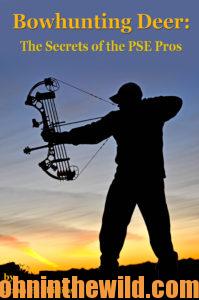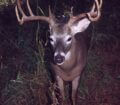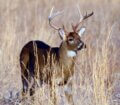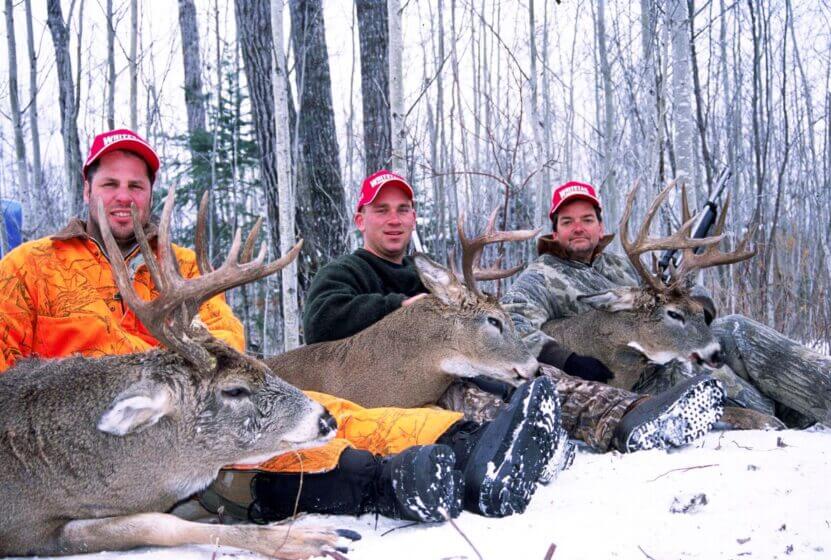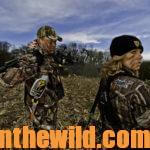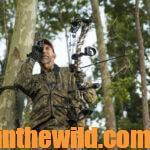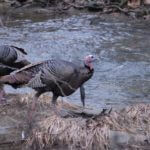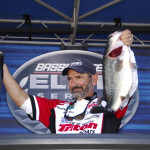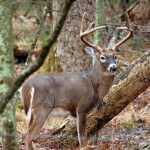Editor’s Note: Today outdoorsmen have begun to learn more about the white-tailed deer. In the past, we haven’t known the right questions to ask. But scientists and researchers have started studying deer more intensely.
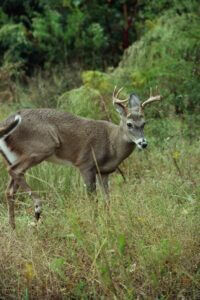 Photograph Deer with Motion-Sensor Cameras:
Photograph Deer with Motion-Sensor Cameras:
“Developing a catalogue of the bucks on a property allows you to successfully manage your deer herd,” biologist Brian Murphy recommends. “This practice enables you to determine the number of bucks on your property and assigns them into age groups. Many hunting properties try to protect bucks 3-1/2 years of age or older. By looking at multiple photographs, you can tell the age of your herd, and by studying the antlers, you can identify individual deer and track them over time, determining which ones are desirable for harvest, and which ones should be protected. By taking those pictures and distributing them to the hunters on your property before the season starts, then you’ll give the hunters a good idea of what bucks they can expect to see, and what they should do when they see one of these bucks. Cataloging your bucks allows a much-higher degree of precision in taking the bucks that need to be taken and protecting those that need to be protected to produce a quality deer-management-type program. You can use your motion-sensor cameras to inventory your deer and especially your bucks prior to the season and then after the season. This way, you know which bucks will be available for harvest at the end of the season, and what bucks are still on the property and available for harvest at the beginning of the season.”
Motion-sensor cameras are highly effective when used to catalogue deer of various sexes and ages. Most hunters are interested in cataloguing the numbers or the sizes of bucks on their properties. But if they’ll spend more time looking at the deer and dividing them into age categories like yearling, 1-1/2, 2-1/2, 3-1/2 and 4-years or older, the hunters will know each age class of deer living on the property and also can help to identify the individual bucks they may want to try and harvest during deer season. Quality motion-sensor cameras allow you to determine how good a job of deer management you’re actually doing. Trail cameras have been proven during a number of extensive studies to be as good, if not better than the vast majority of deer-census techniques known to be used for white-tailed deer, particularly in forested habitat like primarily what’s found in the southern and the eastern portions of the country. In other sections of the country like Texas and other arid states, helicopter- and fixed-winged plane censuses have shown to be effective, however, even these aerial censuses don’t seem to be as accurate as the censuses motion-sensor cameras make.
Develop a Hit List and a Protect List of Deer:
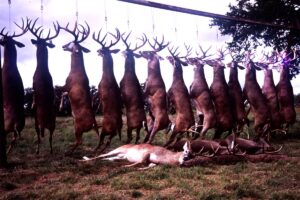
If you’ll go to the time and the trouble to adequately service your deer herd with motion-sensor cameras, biologists say you can set-up a hit list and a protect list for your bucks. Here’s how. If you do a deer census before hunting season, you can choose the bucks you or members of your hunting lease want to harvest. Once you’ve selected the photographs of the bucks you want to take, you can create a mug-shot catalogue of the bucks for each of the members of your hunting lease. The bucks you’ve chosen to be harvested are on the hit list. Likewise, the bucks you want to leave in the herd to grow and reproduce another year are on the protected list. Before the season starts, all the hunters who will hunt that particular piece of property should receive a copy of the hit and protect lists, so they can identify the bucks they need to look for and take in the upcoming season. Too, the hunters will know what bucks have been chosen for protection.
Hit and protect lists provide hunters with a great preview of the bucks they’re likely to see while hunting in the upcoming season. Then hunters are more likely to make the right decisions about which bucks to harvest and which bucks to leave in the herd. The hit and protect lists will allow hunters to see and identify most of the bucks on the property. Some hunting clubs break their hunting lease into sections and then give their members hit and pass lists based on the section where the buck has been photographed. If you see the bucks that have been photographed, you’ll know which ones you should and shouldn’t take.

Another advantage to the hit and protect lists is that they enable you to identify bucks that fall through the cracks of a management system. For instance, if you’re managing your land to take 3-1/2 year-old bucks and older, along with an 8-point and an 18-inch-spread minimum for bucks that are to be harvested, then if you do your photo survey before the season, and you identify a 3-1/2, a 4-1/2 or a 5-1/2 year-old buck that’s only a 6 or a 7 point, you can put him on the hit list. He’ll be available for harvest – even though he may not have 8 points and may not be 18 inches or wider between his main beams. If you do your photo census every year, you can identify individual bucks often by their racks and see and recognize whether there are bucks that aren’t performing up to standard and that need to be removed out of the herd. Motion-sensor cameras are very-effective tools to determine when and if individual bucks that are substandard need to be removed from the herd, especially if you do a photo census every year, so that you have a good knowledge of the growth rate of the bucks on your property.
John E. Phillips’ latest deer book “How to Hunt Deer Like a Pro: Volume II,” just was published on Amazon in print at https://www.amazon.com/gp/product/B0BGSP3QPB/ref=dbs_a_def_rwt_hsch_vapi_tpbk_p4_i4 The Audible version should be available by December. Since deer hunting and deer hunters are drastically changing each year, John interviewed some top deer hunters like Mark Drury, Dr. Larry Marchinton, Dr. Bob Sheppard, Pat Reeve, Gene Wensel, Cody Robbins, Ernie Calandrelli, Brian Murphy and Luke Brewster, who took the world’s largest whitetail, to learn their up-to-date techniques for successfully hunting deer and having more places to hunt. Also, John’s first book in that series “How to Hunt Deer Like a Pro” in Kindle, print and Audible at https://www.amazon.com/dp/B007D3H08M includes other outstanding deer hunters. Too, check-out John’s book, “Bowhunting Deer: the Secrets of the PSE Pros,” https://www.amazon.com/gp/product/B0091T1NKM/ref=dbs_a_def_rwt_hsch_vapi_taft_p1_i1, available now in Kindle, print and Audible versions. 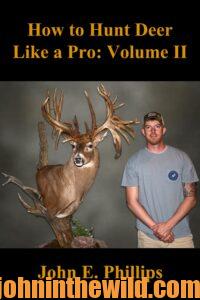 You may have to copy and paste these links into your browser. When you click on these books, notice on the left where Amazon says you can read and hear 10% of the Audible books for free.
You may have to copy and paste these links into your browser. When you click on these books, notice on the left where Amazon says you can read and hear 10% of the Audible books for free. 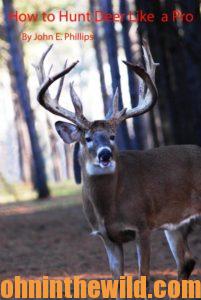 On the right side of the pages and below the offer for a free Audible trial, you can click on Buy the Audible book.
On the right side of the pages and below the offer for a free Audible trial, you can click on Buy the Audible book.